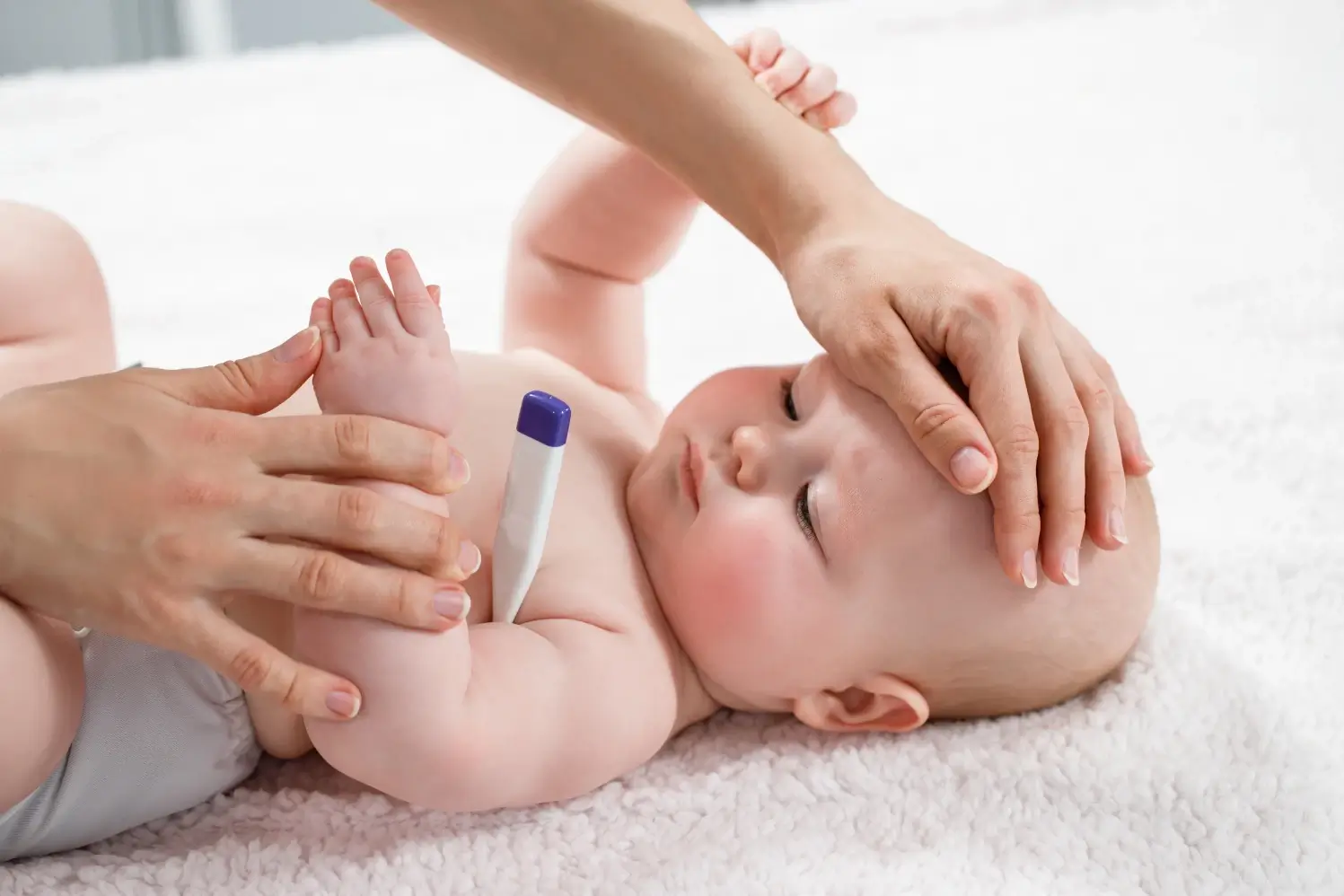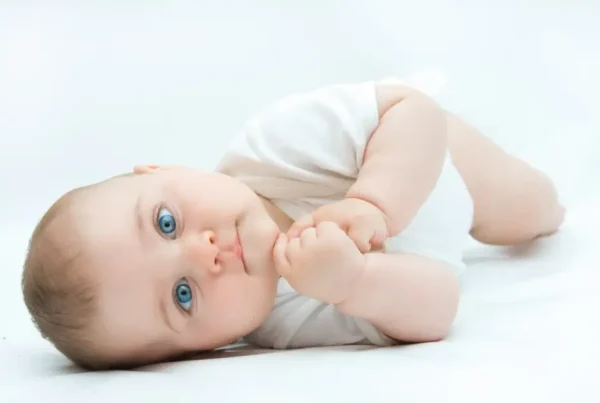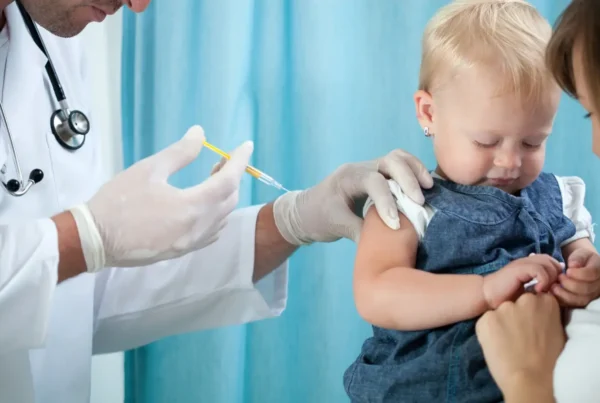A high temperature is the most common symptom of a viral or bacterial infection, next to a runny nose and cough. Unfortunately, it is also a bothersome symptom for the child, making him grumpy and weak, and therefore reluctant to play, without appetite and irritable. Contrary to appearances, fever is not a bad symptom – it is a defensive reaction of the body, i.e. the first signal that the child’s body is fighting a virus or bacteria. It is also a sign that the body has been mobilized to defend itself against the pathogen and that it has activated immune mechanisms. Therefore, there is no need to bring the fever down immediately. When should it be lowered and how should you deal with a feverish toddler?
When do we say that a child has a fever?
It is generally believed that the correct body temperature is 36.6 degrees Celsius. Meanwhile, the range of the correct temperature in a child is much wider – there is no problem if the child’s body temperature is between 36 and 37 degrees. We talk about a higher temperature, or a subfebrile condition, when the thermometer shows a result above 37 degrees, and about a high fever in a child – only when it exceeds 38 degrees Celsius. In certain circumstances, such a temperature can already be lowered with medications – first it is worth allowing the body to fight the disease with it. 40 degrees is a very high fever, dangerous for the child.
The most common causes of fever in children are respiratory tract infections, e.g. bronchitis, flu, sore throat, and childhood infectious diseases, such as rotaviruses or chickenpox.
How to deal with a fever in a child?
It all depends on how old the child is. Fever in newborns and infants is always dangerous – babies in the first months of life have a poorly developed thermoregulation mechanism and do not tolerate high temperatures well, and at this age their immune system is too weak to fight pathogens, so any infection is potentially dangerous. Therefore, an infant with a fever should always be seen by a doctor.
An older child has a stronger body and can cope better with infections. Babies who are not breastfed should drink plenty of fluids to prevent excessive water loss. There are also home remedies that can help your child with a fever. Natural ways to deal with a fever in a child are simple: you can apply cold compresses to the child’s head, calves and neck, and take a cool bath (the water temperature should be 1-2 degrees lower than the body temperature). For older children, we can give them diaphoretic teas, such as linden infusion or raspberry juice.
During a fever, it is best to see a specialist who will prescribe antipyretic medication for your child. A child whose temperature does not drop but increases and reaches 38 degrees (in the case of children up to 3 years of age) or 38.5 (in children over 3 years of age) should receive medication adapted to his age in a dose appropriate to his body weight.
The safest for young patients are paracetamol-based medications in the form of drops or syrups, which are easy for the baby to swallow. Older children can take ibuprofen-based medications. Acetylsalicylic acid should not be administered to patients under 12 years of age.
When should you not delay a visit to the pediatrician?
There are situations in which a fever needs to be brought down quickly and a visit to the pediatrician should not be delayed. This applies, as we mentioned, to infants and small children, as well as situations where a high temperature lasts for several days. Other symptoms that require immediate consultation include febrile seizures, loss of consciousness, shortness of breath, dehydration, and skin lesions that may suggest an infectious disease. A pediatrician should see a child who clearly has pain, for example in the ear (these are common symptoms of otitis media) or has a severe cough and difficulty breathing (these may be symptoms of bronchitis or pneumonia). Such symptoms indicate a serious infection and require the administration of other medications, even antibiotics.
How to measure a child’s body temperature?
There are several methods for measuring the temperature of young children. In the case of fever in newborns and infants, the measurement is most often taken rectally. However, this measurement is overestimated, so 5 lines (approx. 0.5°C) are subtracted from it. To measure the temperature of your baby’s buttocks, lubricate the tip of the thermometer with olive oil, insert it 1-1.5 cm into the body and wait 2 minutes.
In an older child, the temperature can be measured in the mouth (subtract 4 lines) or under the armpit – if the child is old enough to hold the thermometer there. The most convenient for small children are electronic thermometers that measure the temperature in the child’s ear.



